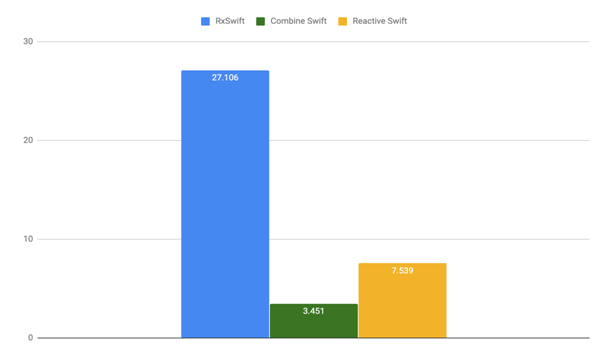Nowadays the modern and advanced applications deal with lots of real-time events that ensure a high-quality interactive experience to the users. We need an avant-garde tool for this and owing to this need, Apple introduced a new framework called Combine.
What is Combine?
The Combine is a brand-new framework by Apple showcased at the Apple Worldwide Developers Conference (WWDC 2019). It is an iOS declarative Swift API that helps in processing values over time. So, you must know Swift to work in the Combine framework.
Combine increases the abstraction level of code which helps you to focus on the interdependence of the events defining business logic. It saves your time focusing on implementation details. According to Apple, the Combine is “Customize handling of asynchronous events by combining event-processing operators.”
Reactive programming is a key feature of the Combine. It features simple multi-threading, cleaner code, and advanced user experience for more responsive products.
The Combine framework can be set side by side to other reactive frameworks like ReactiveSwift (earlier known as ReactiveCocoa) and RxSwift.
When should we use Combine?
“By adopting Combine, you’ll make your code easier to read and maintain, by centralizing your event-processing code and eliminating troublesome techniques like nested closures and convention-based callbacks.” – Apple
The Combine framework permits developers to simply categorize asynchronous information flows inside the application, mechanically evaluates them for better performance and propagates information changes. Application’s complex event-processing code becomes easier to explain, read and, maintain in the Combine. It also saves lots of execution time and memory allocation.
Why Combine?
Let’s discuss some key benefits of using Combine as a framework:
- Simplified asynchronous code: No more callback hells
- Declarative syntax: Easier to read and maintain code
- Composable components: Composition over inheritance & reusability
- Multi-platform: Except Linux, Combine is comfortable with SwiftNIO's approach
- Cancellation support: Build-in cancellation support
- Multithreading: Simplified
- Built-in memory management: No more bags to carry on
Essential Elements of Combine Swift
Some of the essential elements of Combine Swift are:
Publishers and Subscribers
The most important things to understand in Combine are publishers and subscribers.
- A publisher is a component type that can deliver a sequence of values over time. The publishers comprise operators to act on the values they collect from the upstream publishers. Republishing the same is a key function of Publisher.
- A Subscriber subscribes to the publisher to receive its elements. The subscribers request the publishers and only upon their requests, the publishers discharge values. This places the subscriber in control of how fast it gets events from the publishers.
Below are snippets of publishers using in Combine:
|
let publisher = Publishers.Just("Combine Swift in Clarion") let sequencePublisher = let publisher = Publishers.Sequence(sequence: [1,2,3,5,6]) |
Code for subscribing to a publisher by calling sink:
|
let publisher = Publishers.Just("Combine Swift in Clarion") let subscribtion = publisher.sink { value in print(value) } |
|
OUTPUT: Combine Swift in Clarion |
We can also use the sink method to receive an event when the publisher is finished.
|
let subscriber = publisher.sink(receiveCompletion: { _ in print("finished") }) { value in print(value) } |
|
OUTPUT: Combine Swift in Clarion finished |
Subscribers can be also be canceled at any time to avoid receiving events from the publishers by simply calling cancel on them.
|
subscriber.cancel() |
Operators
Operators represent several pre-built functions. These functions are to be composed into pipelines. Some of the operators of Combine are:
Solutions to Practical problems using Combine
- Notification Centre Publishers: Dealing with Notification-Centre observers can become declarative using Combine swift.
- Chaining Asynchronous Calls: another benefit of the combine is the ease of chaining multiple asynchronous calls.
- Performing Multiple Asynchronous Calls: Usually, when we want to wait for two asynchronous operations to finish in order to perform a task, we have to use DispatchGroups and to do manual management. Now, we can use a zip operator with Combine Swift.
Execution time from of the Different frameworks
Execution Time in Seconds

Heap allocation in Kilobytes
Image courtesy: Medium
Conclusion
The newest iOS reactive framework, Combine helps in data streaming. With the essential components of the framework it’s crystal clear that we can make our code declarative & simple with the Combine framework. Besides, it's stable and has strong version support. it is a perfect framework for the iOS developers who can leverage on the declarative code to make smooth apps.






